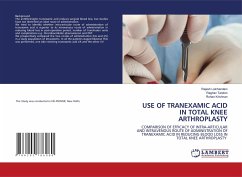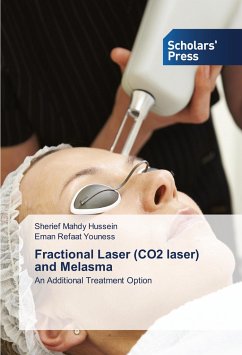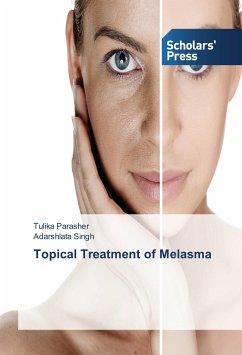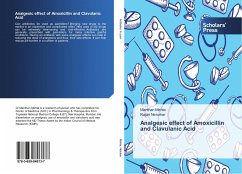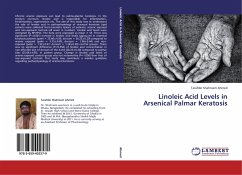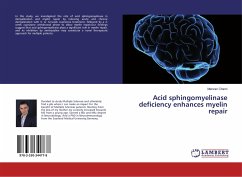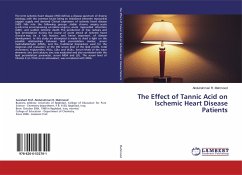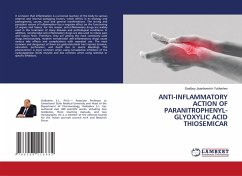
Melasma and Tranexamic acid
Oral tranexamic acid for treatment and prevention of relapse in melasma
Versandkostenfrei!
Versandfertig in 6-10 Tagen
30,99 €
inkl. MwSt.

PAYBACK Punkte
15 °P sammeln!
Melasma, a common acquired pigmentary disorder among Asians, is difficult to treat and there is no universally effective therapy. The existing treatment modalities like topical hydroquinone, or retinoic acid, kojic acid, azelaic acid, and glycolic acid, trichloroacetic acid, salicylic acid, and lactic acid as peeling agents or lasers and dermabrasion have inherent limitations of limited efficacy and side effects, especially on prolonged usage. Moreover, it often relapses on discontinuation of therapy. The research is ongoing to develop newer, safer and innovative treatments for melasma that ca...
Melasma, a common acquired pigmentary disorder among Asians, is difficult to treat and there is no universally effective therapy. The existing treatment modalities like topical hydroquinone, or retinoic acid, kojic acid, azelaic acid, and glycolic acid, trichloroacetic acid, salicylic acid, and lactic acid as peeling agents or lasers and dermabrasion have inherent limitations of limited efficacy and side effects, especially on prolonged usage. Moreover, it often relapses on discontinuation of therapy. The research is ongoing to develop newer, safer and innovative treatments for melasma that causes profound cosmetic disfigurement, psychological stress and social embarrassment. The use of tranexamic acid, orally, topically, intravenously, or transepidermally to treat melasma is a recent concept. It has been used orally, alone or as adjuvant, in doses varying between 250 mg/d and 2.25g/d for 6 weeks to 6 months with almost equal efficacy. Therapeutic effect becomes apparent in 1-2 months but treatment continuation is important to prevent relapses. This study shows that 500mg PO twice daily initially achieves early clearance of melasma and relapses can be prevented by 250mg once daily.



